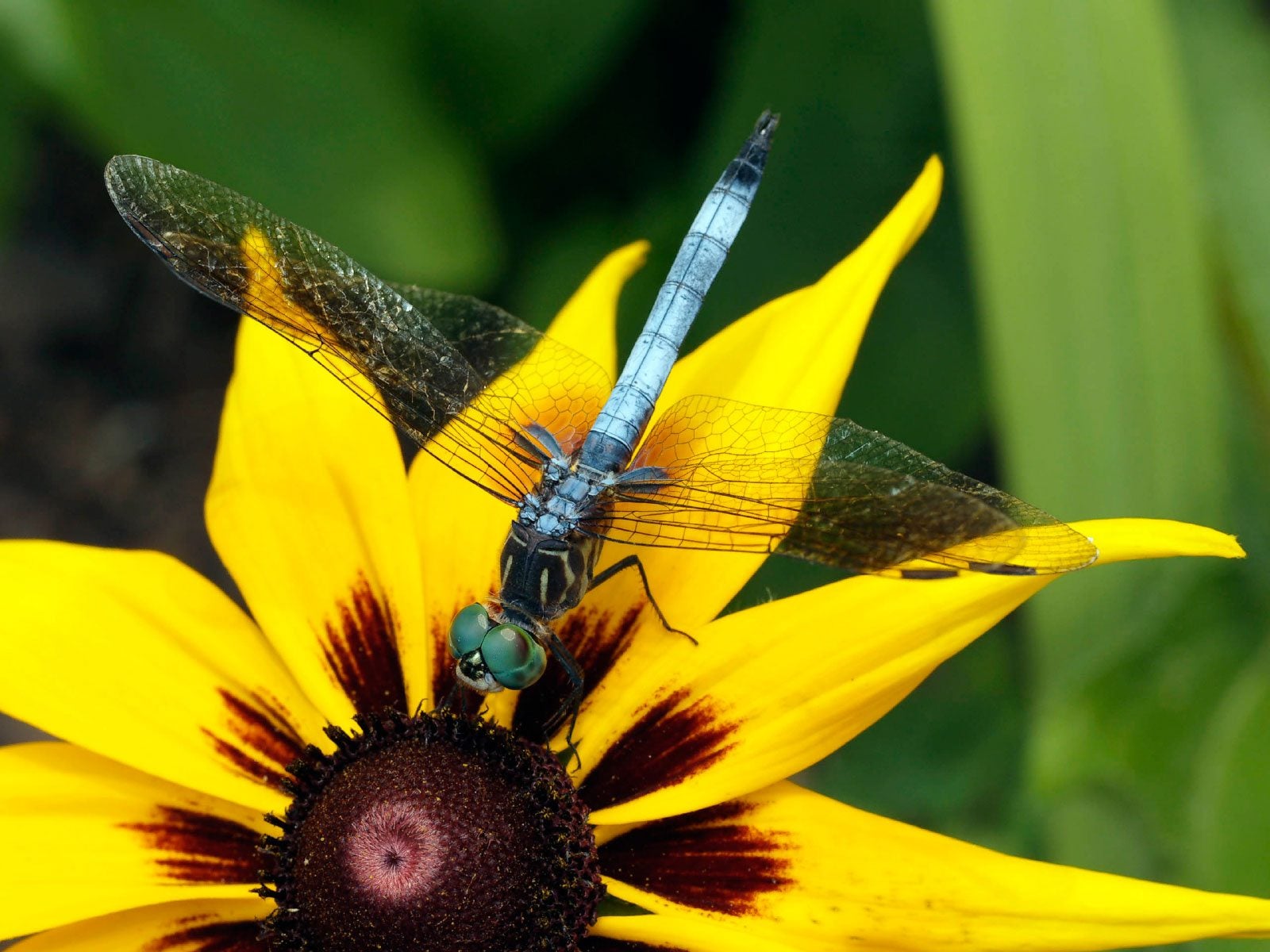Tips For Attracting Dragonflies - What Plants Attract Dragonflies To Gardens

Dragonflies, one of the oldest known insects, are attracted to boggy, wet areas and are often found hanging around garden ponds and fountains. These beneficial creatures can be an asset to the garden, keeping menacing insects to a minimum. Keep reading to learn what plants attract dragonflies so you can invite these helpful insects to your garden area.
Dragonfly Information
Dragonflies in the garden are harmless to people and do not sting or bite. They are elegant insects that keep the fly and mosquito population in check. They consume their own body weight in bugs each half hour, so having a few of these beautiful winged creatures around is a great help to outdoor enthusiasts. Attracting dragonflies to the garden can greatly decrease the number of pesky insects in the area. Able to fly at speeds up to thirty miles per hour, dragonflies can easily avoid predators like frogs and birds. Their large, compound eyes help them catch their prey in mid-air without missing a beat. Female dragonflies lay their eggs in muddy or wet areas. Nymphs hatch in about three weeks and will live in the water for almost two years. Dragonflies are very sensitive to air pollution, so if you have a large number of dragonflies, it may be a good indication that your air quality is good.
How to Attract Dragonflies
When attracting dragonflies to the garden, experts recommend installing a pond that is at least 20 feet (6 m.) in diameter. A pond of this size will support all stages of dragonfly development. A depth of 2 feet (61 cm.) with shallow, sloping sides allows a place to plant water-loving vegetation. The pond is best if positioned in a sunny location. Don't put fish in your pond, as they feed on nymphs and will hinder your efforts to support the dragonfly population. In addition to a pond, you can implement a small bog or rain garden, especially if you have areas of the yard with poor drainage that are prone to standing water. You can also install several 3 foot (91 cm.) stakes, about 6 feet (2 m.) apart throughout your garden. The winged beauties will land on these stakes, using them as a perch. Avoid using any pesticides or bug zappers in your garden.
What Plants Attract Dragonflies?
A wide variety of plants is best to support a thriving dragonfly population. Submerged vegetation such as dwarf sagittaria, which grows well in USDA plant hardiness zones 6 through 10, is a great option as it provides a place for nymphs to rest and seek food. Floating plants that are not rooted under the water are also necessary for any dragonfly habitat. Females will lay their eggs on the underside of the plant or on the stems. The Western water lily is hardy in zones 10 and 11 and fanworts, which will grow in zones 6 through 11, are attractive options. Emergent plants are those that are rooted on the bottom of ponds but have stems and leaves that rise out of the water. Dragonflies love these plants because they use them during both nymph and adult stages. Water horsetail grows well in zones 4 through 11 and is a lovely dark green emergent plant that has a hollow stem with a few branches. Shoreline plants also provide adult dragonflies with a place to hide and hunt. Also known as marsh plants, shoreline plants thrive in moist soil and include such plants as arrowhead, in zones 4 through 10, and the popular cattail, which thrives in zones 2 through 11.
Sign up for the Gardening Know How newsletter today and receive a free copy of our e-book "How to Grow Delicious Tomatoes".